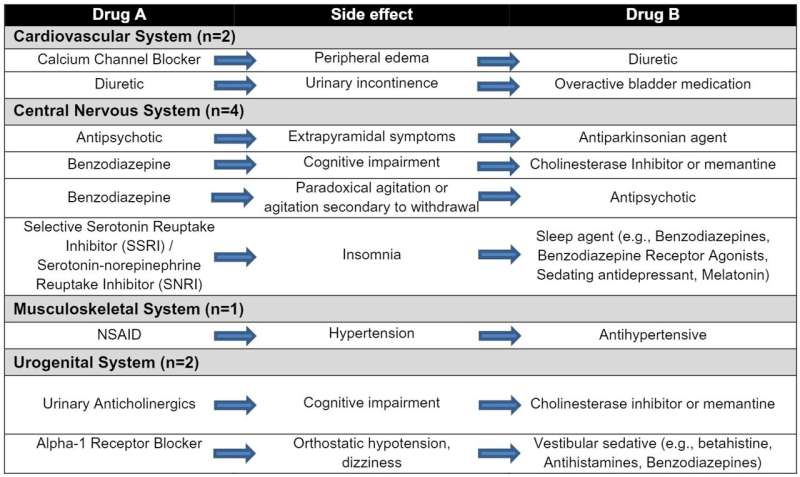
Medications are effective and powerful treatment options for protecting and advancing human health. But medications can also cause harm, particularly among older adults who are often taking multiple medications over long periods of time.
Experts at the University of Toronto’s Leslie Dan Faculty of Pharmacy and Women’s College Hospital, have led an effort to create a new tool for prescribers to identify, prevent, and manage potentially inappropriate prescribing practices known as prescribing cascades. Inappropriate medication use as a result of prescribing cascades can put people at unnecessary risk of adverse drug events, reduced quality of life, as well as additional costs to individuals and health care systems.
“Prescribing cascades occur when a drug is prescribed to manage the side effects of another drug, often when a side effect is misinterpreted as a new medical condition,” says Lisa McCarthy, an expert in deprescribing and associate professor at the Leslie Dan Faculty of Pharmacy. “Sometimes it makes sense to introduce a new drug to treat side-effects of another, but sometimes the prescriber doesn’t recognize that what they are seeing is, in fact, a drug-induced effect, and this can lead to inappropriate and potentially harmful prescribing.”
The tool, called ThinkCascades, is published this week in the journal Drugs & Aging. It identifies nine clinically important prescribing cascades that affect older people when treating for common conditions like anxiety, insomnia, hypertension, or urinary incontinence.
“By identifying nine clinically important prescribing cascades, this tool helps clinicians recognize other prescribing cascades when managing polypharmacy,” says Paula Rochon, scientist and founding director of Women’s Age Lab based at Women’s College Hospital in Toronto.
“If we adjust our thinking to focus attention on raising awareness about prescribing cascades when reviewing medications, we can then work towards optimizing therapies and reducing medication harm for older adults, particularly women,” says Rochon who is also professor with University of Toronto’s Institute of Health Policy, Management and Evaluation.
While the research team outlines there are many instances of prescribing cascades across health care globally, these nine were selected by engaging a multidisciplinary panel of more than 30 clinicians from six countries with expertise in geriatric pharmacotherapy.
“Many clinicians struggle to identify prescribing cascades both conceptually and in clinical practice which makes them underrecognized contributors to medication-related harm,” says McCarthy who is also a clinician scientist at Trillium Health Partners. “In many ways, it’s really a problem that nobody sees. And when multiple prescribers are involved, responsibility for appropriate prescribing and patient education may also be unclear.”
But McCarthy notes that there is growing awareness about the extent of preventable medication-related harm with the World Health Organization (WHO) identifying medication safety as the theme for its World Patient Safety Day to be held on September 17, 2022.
In addition to raising global awareness of the high burden of medication related harm, WHO’s World Patient Safety Day aims to empower patients and families to be actively involved in the safe use of medications. McCarthy agrees that this is an important aspect of reducing harm.
Source: Read Full Article


